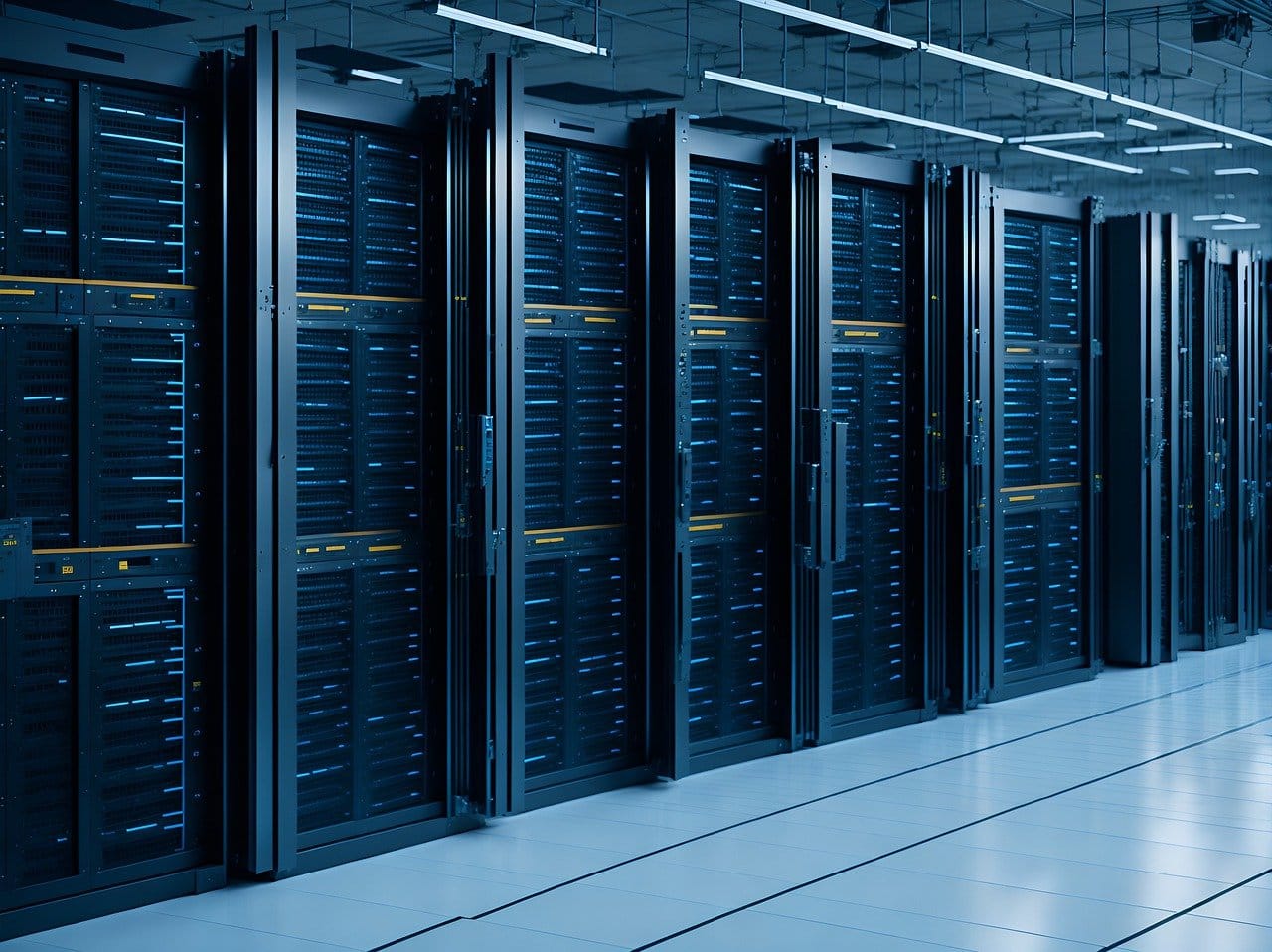In recent years, data centersA data center or data processing center (DPC) … have been undergoing significant evolution, largely driven by the arrival of new technologies such as high-performance computing and artificial intelligence. These new operational models demand more robust and efficient infrastructures that can adapt to the growing market demands.
Next, we will review the main trends that will transform data centers in 2025.
Artificial Intelligence
Artificial intelligence is transforming not only the operation and management of data centers but also their design. These centers, now hosting servers specialized in machine learning and AI, require unprecedented power levels. AI, with its ability to process large volumes of data in real-time, optimizes energy efficiency, allows for smarter workload management, and anticipates potential failures. It also automates processes such as infrastructure management and cooling optimization, reducing operational costs and promoting sustainability.
By 2025, it is expected that the integration of AI-based solutions will be essential to increase the efficiency of data centers and enhance their responsiveness to the growing market demands.
Energy Consumption
Data centers have significantly contributed to the increasing energy demand. According to the “TMT Predictions 2025” report from Deloitte, energy consumption in data centers is expected to grow by 12% by 2030, reaching 1,065 terawatt-hours (TWh), which would account for 4% of global energy consumption.
This growth presents technical challenges, such as managing increasingly higher power densities, with racks of 50 kW, 100 kW, and even 300 kW. To mitigate the impact of energy consumption, data centers are opting for more efficient designs and exploring advanced technologies, including energy recovery systems, automation, and energy management, which allow them to balance facility performance without compromising energy efficiency.
Liquid Cooling
As data centers grow and the demand for their resources increases, cooling requirements become more stringent. The proliferation of servers dedicated to AI and real-time analytics increases electrical load density, subjecting data centers to thermal stress that highlights the need for adopting more advanced cooling technologies.
In this context, liquid cooling emerges as a solution capable of managing high heat densities more effectively than traditional cooling. This technology not only optimizes operational efficiency but also significantly reduces energy consumption, a critical aspect in an industry increasingly focused on sustainability.
For all these reasons, it is anticipated that in the coming years, most data centers will integrate some form of liquid cooling technology into their operations, a fundamental shift for thermal management strategies.
Sustainability
Sustainability has become one of the main pillars of the sector, driven by the business model of data centers, whether they are Cloud Service Providers (CSP) or colocationHousing facilities are a type of data center …. Reducing energy consumption not only minimizes environmental impact but also significantly lowers operational costs. However, despite technological advancements in efficiency, energy consumption continues to rise, posing a challenge for the industry in its transition to a greener future.
According to Goldman Sachs Research, carbon dioxide emissions generated by data centers worldwide could double by the end of this decade.
To mitigate these effects, the sector is adopting significant efficiency and sustainability measures, supported by innovative technologies and government policies. An example is the European Union’s Energy Efficiency Directive (EED), created to promote the use of renewable energies. This regulation requires data center owners and operators with a total installed IT energy demand of 500 kW or more to provide annual general information on key performance indicators (energy, ICT capacity, and data traffic) and sustainability (energy and water usage, energy reuse factor, and renewable energy factor).
Initiatives like this aim not only to reduce the industry’s environmental footprint but also to establish a standard for transparency and energy accountability.
Location
The location of data centers is a critical element that directly influences their design, operation, and technology selection. Factors such as energy availability or infrastructure constraints determine whether a new facility will be built or an existing one will be upgraded.
To address these challenges, an increasing number of data centers are opting to locate in industrial areas or near renewable energy sources, such as solar plants or wind farms, to ensure low latency. It is especially hyper-scaleers or AI developers who are choosing these new locations, as proximity to large urban centers is no longer essential for them.
This strategy not only overcomes energy infrastructure limitations in urban areas but also ensures optimal data transmission speeds, essential for high-demand operations and real-time connectivity.
Talent
The rapid expansion of data centers has highlighted the shortage of skilled professionals to fill the roles demanded by the sector. According to the Uptime Institute, it is estimated that the workforce needed to operate these centers will reach 2.3 million by 2025, which involves incorporating approximately 300,000 additional employees globally.
This demand for talent poses a challenge for the industry in 2025, which must implement strategies to attract and retain professionals, as well as collaborate with educational institutions and adopt labor policies that promote inclusion and diversity in the sector.
In summary, 2025 will be marked by technological innovation, a focus on sustainability, and the integration of solutions that enhance efficiency, operability, and adaptability to the growing market demands. Organizations that adopt these trends will be better positioned to face the challenges and future of the data center industry.

